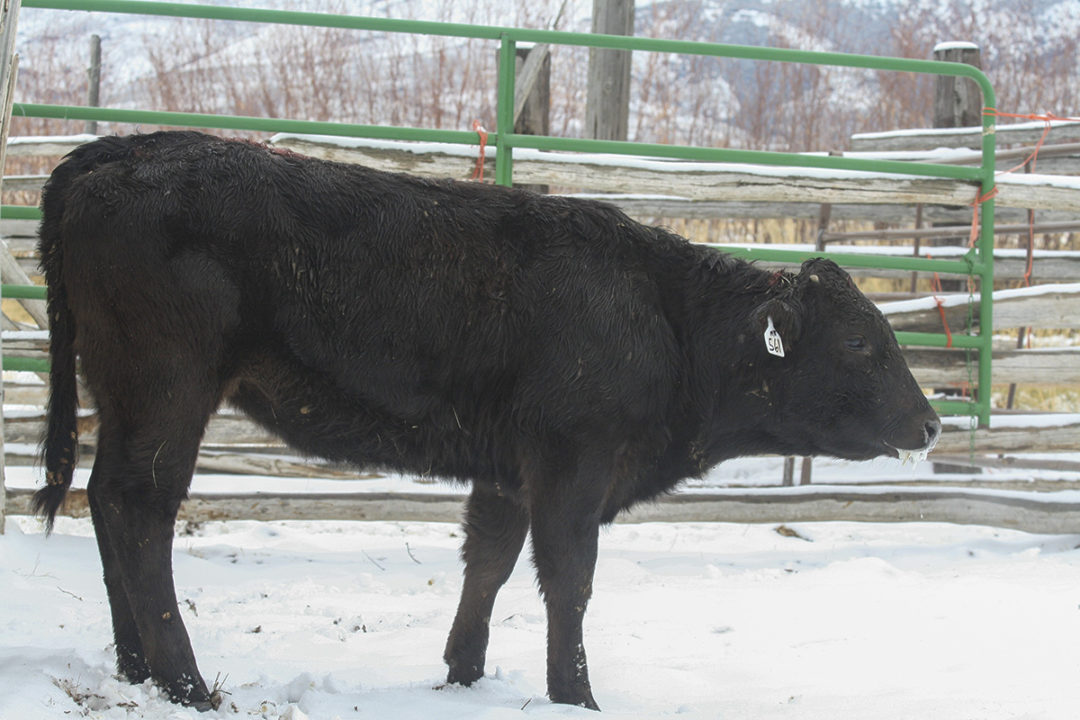Cattle producers use a variety of tactics when handling acute or chronically sick animals in cold winter weather. Some pull them for treatment before placing them in a series of designated hospital pens, while others prefer to return almost all to their home pens.
Gerald Stokka, extension veterinarian and livestock stewardship specialist at North Dakota State University, says there’s always been plenty of discussion about hospital pen relevance in all climates and locations.
“Before long-duration antibiotics, they were critical, as treatment occurred for several days in a row,” he says. “Since their advent, many simply treat the sick and return them to their original pens, hoping these antibiotics will get them back on track.”
When daily treatments were required, separate locations kept competition for feed, bedding and shelter to a minimum, allowing a more comfortable recovery area. With long-acting medications, it often makes sense to return cattle to their familiar penmates, rations and routines.
Management no matter the weather
“If designated hospital pens are used, they must be managed properly,” says Stokka. “They can’t be a catch-all where calves are ignored and neglected, but a place where needs are taken care of.”
As a rule of thumb, freshly pulled calves shouldn’t be added to those pulled days prior. A day-to-day rotation prompts more informed decisions on whether to continue daily treatments or send them home. Stokka says cattle in the northern Plains and Canada have adapted well to cold weather as long as they’re fed appropriately.
“I call it their little potbelly stove: the rumen, the fermentation vat,” he says. “It produces tremendous energy to keep them warm when they’re healthy enough to eat. Like humans, when we’re sick and not eating normally, we can’t heat ourselves as well.”
Lean-tos, shelters, roofs, windbreaks and bedding also make a huge difference in the ability to stay warm in cold rain or wet snow. Additionally, water source management and maintenance are critical in Northern climates where electrically heated waterers are standard.
“If cattle crowd around a waterer without drinking, there may be stray electrical voltage in the water,” Stokka said. “Nothing puts them off maintaining their health quicker. It’s an extra condition to be aware of when using heated waterers.”
Location, design and ease of use
Zach Raptosh, owner of Lake Shore Animal Hospital in Nampa, Idaho, says it’s important for ranchers in his area that hospital pens are located away from healthy cattle and accessible in wintry weather.
“We don’t want to put them in the middle of a feedlot with healthy animals on either side,” he says. “Ideally, they’re located separate and easy to get to.”
While Raptosh deals with producers using small pens as both winter hospital corrals and maternity pens, many are set up to run a loader directly through. Manure and water can be pushed out without having to bring in a truck.
“Keeping them clean in wet and cold weather is tough,” he says. “If it’s designed to remove a panel, or open a couple of gates and drive through, the wet stuff is easily pushed out.”
Raptosh also recommends creating a center mound for drainage even in smaller pens to help keep conditions drier. Handling facilities must also be easy to use. If it takes minimal effort to set gates and move panels, getting buy-in from workers is easier.
“Try to make it natural for movement,” he says. “If it’s almost quitting time, pen riders will be more willing to pull something with a leaky eye when it’s not a big deal.”
Separation, stocking rates and disease transmission
Raptosh says in a perfect world, it would be productive to keep everything like respiratory, lameness, riders, ages and genders separate, but it’s not always realistic. Most operations have a chute and corral system for multiple purposes to treat the sick, preg check and pull calves.
“Whether for chronics, lameness, riders or respiratory issues, it’s important to keep them there for as short a time as possible,” he says. “It’s better if they’re back in their home pen or pasture as opposed to locked up.”
Regarding disease transmission, Raptosh doesn’t think weather makes a big difference but considers stocking rates and commingling key.
“If too many animals share a small space, feed, manure and available spots to lie down influence transmission,” he says. “While some of these problems are spread orally and nasally, if there isn’t room to move, get out of the manure, have a bite of feed when they feel like it and lie down somewhere dry, it’s going to lead to issues that become larger rather than smaller.”
Stokka believes much depends on how many higher-risk cattle – especially for bovine respiratory disease (BRD) – are in a yard. To minimize walking for feed and water with lameness, abscesses or chronic foot rot cases, it becomes a balancing act based on the specifics of individual operations.
Rations and low-stress handling
Regarding rations, Stokka says feed in hospital pens should be maintained as similar as possible to home lots to avoid digestive upsets, although this becomes difficult with varying ages and health problems. He suggests energy levels may need to be reduced and roughage added to keep intake levels up.
A key factor, no matter how or if designated hospital pens are used, is the use of low-stress handling practices. Stokka emphasizes those responsible for health care need to understand behavior and practice patience to avoid frustration for both handlers and livestock.
“Having the right personalities moving sick or compromised animals can’t be overstated,” he stresses. “When they’re fevered and sick, sometimes they become aggressive. We need to understand this and act appropriately.”
Raptosh adds that to manage hospital pens better in Northern climates, the pen should face away from the direction the usual weather comes from, have a high spot in the center and easy access to push manure out in bad weather.
“They need to be laid out functionally so they’re not a nightmare everyone avoids,” Raptosh says. “Handle cattle calmly without adding anxiety to their already weakened immune systems. These designs and practices apply to all weather conditions.”







